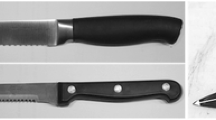Abstract
The ostrich foot has four toepads, two on the 3rd digit, one on the 4th digit and one at metatarso-phalangeal joint. Previous studies have not detailed the histo-morphological structure of these toepads. In this study, we have described the macroscopic and microscopic structures of the toepad of ostrich (Struthio camelus). Numerous papillae with different direction, length and thickness have been observed grossly on the ventral surface of each toepad. Histological examinations have revealed that the epidermis of the ostrich toepad, similar to other digitigrades, consists of an outer stratum corneum and an inner stratum germinativum (which is subdivided into basal, intermediate and transitional layers). The stratum corneum has several layers of flattened horny cells. The nuclei of basal cells have several mitotic figures. The cytoplasm of the stratum germinativum cells has multiple lipid droplets and multigranular bodies (in transitional cells only). Scanning electron microscopic examination revealed presence of collagen fibers in mid and deep dermis of each toepad. These fibers run parallel and connect to each other by very thin fibrils which are branched, crossed with each other in an oblique direction. Such arrangement of these collagen fibers, thin fibrils and presence of digital cushion are likely to be responsible for the protection of the underlying soft tissues and absorption of concussion.



























Similar content being viewed by others
References
Alexander RMcN, Maloiy GMO, Njau R, Jayes AS (1979) Mechanics of running in the ostrich (Struthio camelus). J Zool Lond 187:169–178
Bennett C (1997) Foot pad health and small laying hen flocks livestock knowledge. Winnipeg, Manaitoba. http:www.Gov.mbCo. agriculture
Cooper R, Mahrose M, Elshafei M, Mara I (2008) Ostrich farming. J Trop Anim Health Prod 40(5):349–355
Deeming DC (1999) The ostrich biology. Production and Health
Egerbacher M, Helmreich M, Probst A, König H, Böck P (2005) Digital cushions in horses comprise coarse C.T. myxoid tissue and cartilage but only little unilocular fat. Anat Histol Embryol 34:112–116
Korner-Nievergelt F (2004) 13 Correlation of foot sole morphology with locomotion behaviour and substrate use in four passerine genera. In: Elewa AMT (ed) Morphometrics applications in biology and paleontology, pp 175–196
Gibson T, Kendi RM, Craik E (1965) The mobile architecture of dermal collagen. Br J Surg 52:764–770
Hallam MG (1992) The Topaz introduction to practical ostrich farming. Harare, Zimbabwe
Harris HF (1900) The haematoxylins: In: Bancroft JD, Stevens A (eds) Theory and practice of histological techniques, 2nd Edn. Colchester and London.
Hayat M (1986) Basic techniques for transmission Electron Microscope, 2nd edn. Academic, Baltimore
Keast A (1996) Wing shape in insectivorous passerines inhabiting New Guinea and Australian rain forests and eucalyptic forest/eucalyptic woodlands. Auk 113:94-
König HE, Macher R, Polsterer-Heindl E, Sora C-M, Ch. Hinterhofer M Helmreich, P. Bo¨ ck (2003) Sto Bbrechende enrichtugen am zehenendorgan des pferdes. Wien Tierarzll Mschr 90:267–273
Landmann L (1980) Lamellar granules in mammalian, avian and reptilian epidermis. J Ultrastruct Res 72:245–263
Lennerstedt I (1975) A functional study of papillae and pads in the foot of passerines, parrots, and owls. Zoolog Scripta 4:111–123
Lilly White HB (2006) Water relations of tetrapod integument. J Exp Biol 209:202–226
Manlius N (2002) The ostrich in Egypt past and present. J Biogeogr 28:945–953
Masson P (1929) Some histological methods trichrome staining and their preliminary technique. Bull Intern Assoc 12:7–10
McDowell A, Trump F (1976) Histologic fixatives suitable for diagnostic light and electron microscopy. Arch Pathol Lab Med 100:405–415
Menon GK, Brown B, Elias P (1986) Avian epidermal differentiation role of lipids in permeability barrier formation. Tissue Cell 18(1):71–82
Menon GK, SY E Hou, Elias PM (1991) Avian permeability barriers function reflects mode of sequestration and organization of stratum corneum lipid: revaluation utilizing Ruthenium tetroxide staining and lipase cytochemistry. Tiss Cell 445–456
Menon GK, Maderson PF, Drewes RC, Baptista LF, Price LF, Elias PM (1996) Ultrastructure organization of avian stratum corneum lipids as the basis for facultative cutaneous wateroofing. J Morphol 227:1–13
Menon GK, Menon J (2000) Avian epidermal lipid: functional considerations and relationship to feathering. Am Zool 40:540–552
Meyer W, Neurand K, Radke B (1981) Elastic fiber arrangement in the skin of the pig. Arch Dermatol Res 270:391–401
Meyer A, Cloete P, Brown R, Schalklugk J (2002) Declawing ostrich “struthio camelus domesticus” chicks to minimize skin damage during rearing. S Afr J Anim Sci 32:3
Milản J (2006) Variations in the morphology of emu (Dromaius Novahollandiae) tracks reflecting differences in walking pattern and substrate consistency: ichnotaxonomic implication. Palaeontology 49(2):405–420
Odland GF, Montagna W, Lobitz W (1964) (Eds) The epidermis. Academic press, New York, pp 237–249
Ridge M, Wright V (1966) The directional effects of the skin. J Invest Dermatol 46:341–346
Raikow RJ (1985) Locomotor systems. In: King AS, McLelland J (eds) Form and function in birds. Academic, London, pp 57–147
Shanawany M, Dingle J (1999) Ostrich production system food and Agriculture org.
Shtekher S (1966) The rate of physiological regeneration of avian epidermis. Translated from Biulleten' eksperimental'noĭ biologii i meditsiny, 61(3):323–315
Spearman R (1971) The integument, a text book of skin biology, vol. (3). Cambridge University Press
Speer B (2003) Ratite neuromuscular disease. WW.netpets,org/birds/healthspa/Vet/ratite.html
Stettenheim P (2000) The integumentary morphology of modern birds an over view. Integr Comp Biol 40(4):461–477
Szirmai J (1968) The organization of the dermis. In: Montagna W, Bentely JP, Dobson Rl (eds) Advances in biology of skin_ dermis, vol x. Appleton-Century-Croft, pp 1–17
Wertz PW (2000) Lipids and barrier function of the skin. Acta Derm Venersel, supp. 208, pp 7–11
Author information
Authors and Affiliations
Corresponding author
Rights and permissions
About this article
Cite this article
El-Gendy, S.A.A., Derbalah, A. & El-Magd, M.E.R.A. Macro-microscopic study on the toepad of ostrich (Struthio camelus). Vet Res Commun 36, 129–138 (2012). https://doi.org/10.1007/s11259-012-9522-1
Accepted:
Published:
Issue Date:
DOI: https://doi.org/10.1007/s11259-012-9522-1




